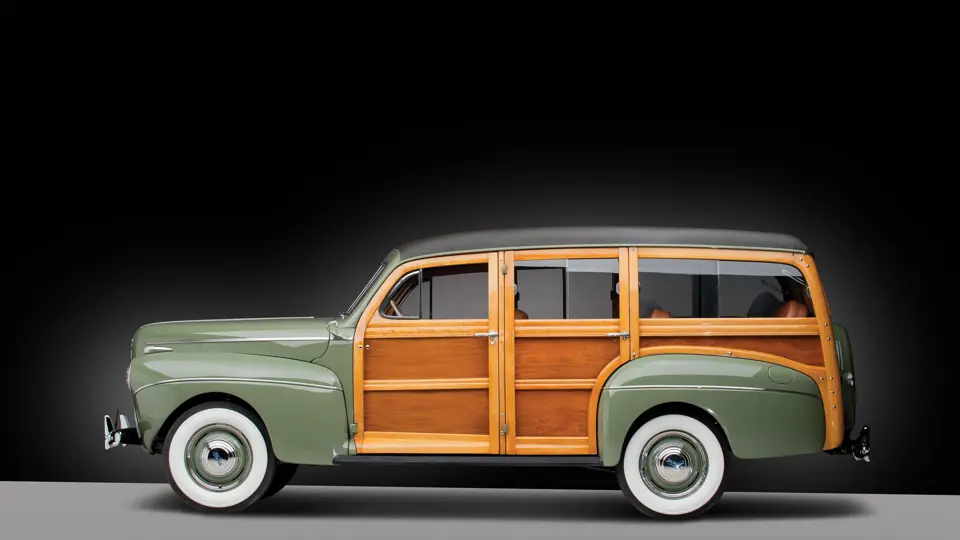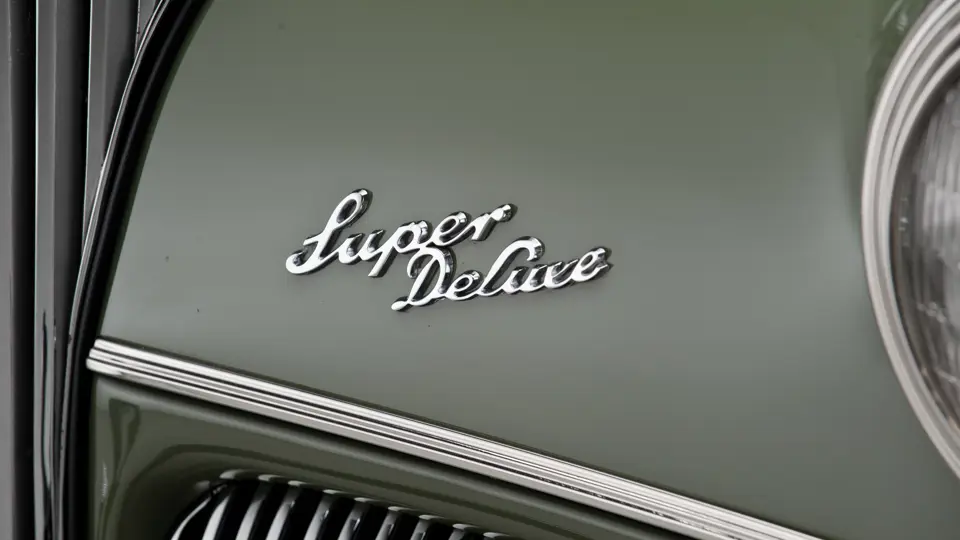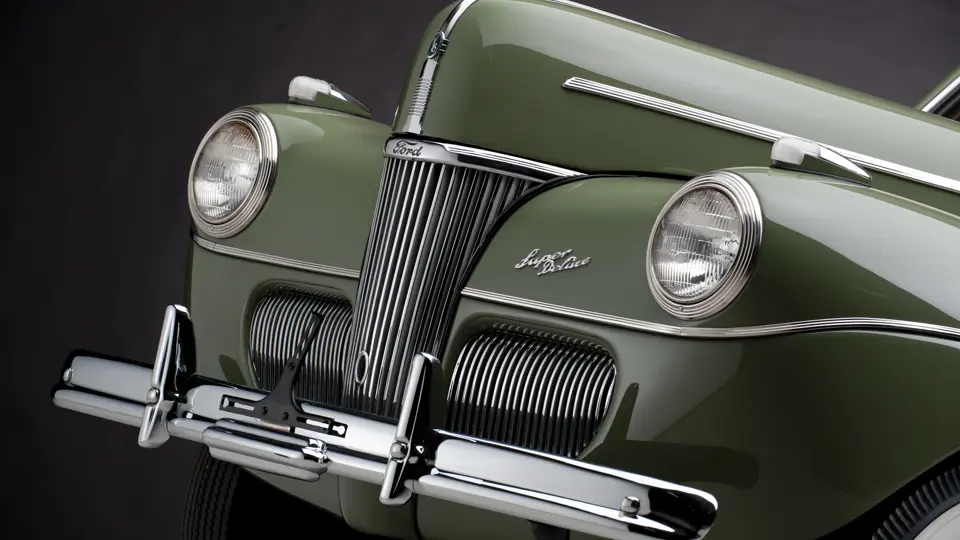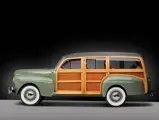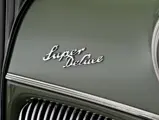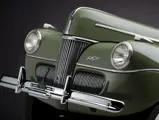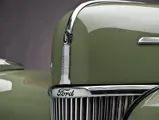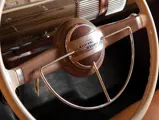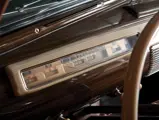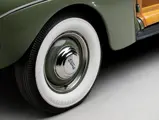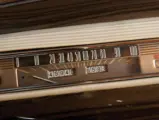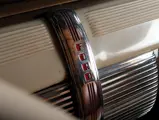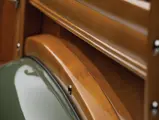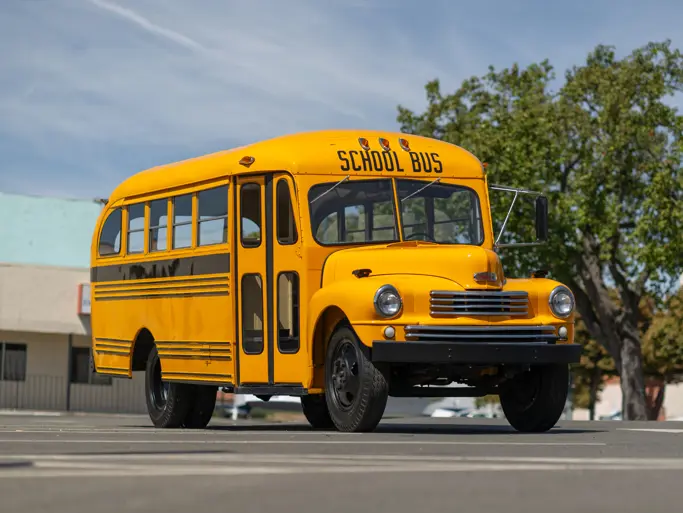MODEL 11A. 85 bhp, 221 cu. in. L-head V-8 engine, three-speed manual transmission with Columbia overdrive, solid front axle and live rear axle with transverse semi-elliptic leaf springs, and four-wheel hydraulic drum brakes. Wheelbase: 114"
For 1941, the Ford design team, headed by E.T. Gregorie, undertook a complete redesign, not only of Ford but also its two-year-old sister car, Mercury. Gone was the “pointed prow” look that had characterized Edsel Ford’s thinking and Gregorie’s drawings since the mid-1930s, replaced with a fuller, rounder theme.
To blend with the new cowl and fender shapes, the station wagon bodies were modified with new body contours and a new roofline. The doors were flared out at the bottom to partially cover the running boards, and vent windows were added to the front doors. Bodies were framed in maple, with panels of either birch or gumwood. Since 1939 there were two series of wagons, but what had been Standard and Deluxe became Deluxe and Super Deluxe, respectively. Production levels of the two wagon series were the best yet for Ford woodies: 8,128 Deluxe models, slightly more than 2,000 of them built in Canada, and 9,485 Super Deluxes.
Despite their beauty, and partly because of it, wood-bodied station wagons are difficult to maintain. When new, it was recommended that the bodies be re-varnished once a year, perhaps more often if not garaged. Owners frequently tired of this regimen and let their woodies weather, with unhappy results. Others took a more drastic step, resorting to house paint for longer lasting protection.
This 1941 Ford was previously in the renowned Nick Alexander woodie collection in California. When found by Mr. Alexander, its body had been painted white. Because it was impossible to see the condition of the wood underneath, the seller was having trouble attracting potential buyers. By his account, “I thought there was a good chance that the paint had been on there [for some] time. I gambled and bought it.” When brought back to his shop and stripped, he discovered “some of the most gorgeous and original factory wood you’ve ever seen. It had gumwood panels and every joint was tight.”
Now completely restored, this 1941 Super Deluxe station wagon displays its varnished wood with pride. The years spent hiding under white paint preserved it well and only the slightest discoloration shows. The doors shut well and all exhibit even gaps. The Lockhaven Green paint has a good, deep shine. Lockhaven is a light green with a taste of grey, very popular in its day and almost the archetypal 1941 woodie color, even now. The roof is newly covered in black artificial leather.
The car’s chrome brightwork is new, and the stainless trim is excellent. The running board rubber looks new. The Ford script glass has a bit of separation and shows a few scratches, but overall, is extremely presentable. A 1962 New Jersey inspection sticker remains on the passenger windshield, a pivotal artifact from its earlier life.
The seats are newly upholstered in brown leather. The front has lap belts for two. There are new black rubber floor mats, front and rear, and new pedal pads for the brake and clutch. The dashboard is newly restored in Sequoia wood grain, and it has excellent plastic. The instruments and Super Deluxe steering wheel are also nicely restored and are joined by an electric clock above the glove box.
The engine is carefully restored in Ford Green and the entire engine compartment reflects the look of a car a few months old, lightly used but very, very clean. The chassis and underbody are painted gloss black, and are also very clean.
Acquired by Nick Alexander in May 1999, it was restored immediately thereafter and was honored with a sought-after Dearborn Award by the Early Ford V-8 Club at Pismo Beach in 2001, earning a score of 981 points. With current mileage showing close to 50,000, its Columbia overdrive rear axle makes it ideal for touring or freeway use. The car, whose body number dates from June 1941, is an uncommonly correct car from the Ford woodie’s best prewar year. Enthusiasts with an eye for detail will surely delight in inspecting this car.




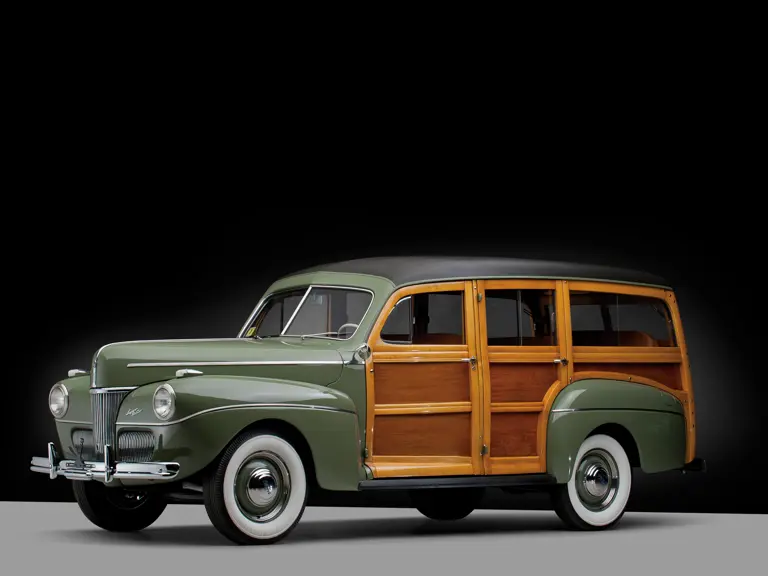
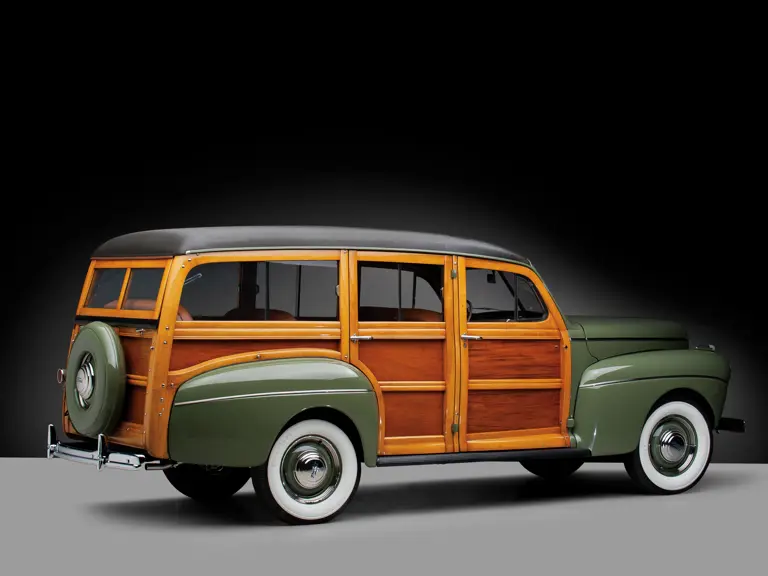
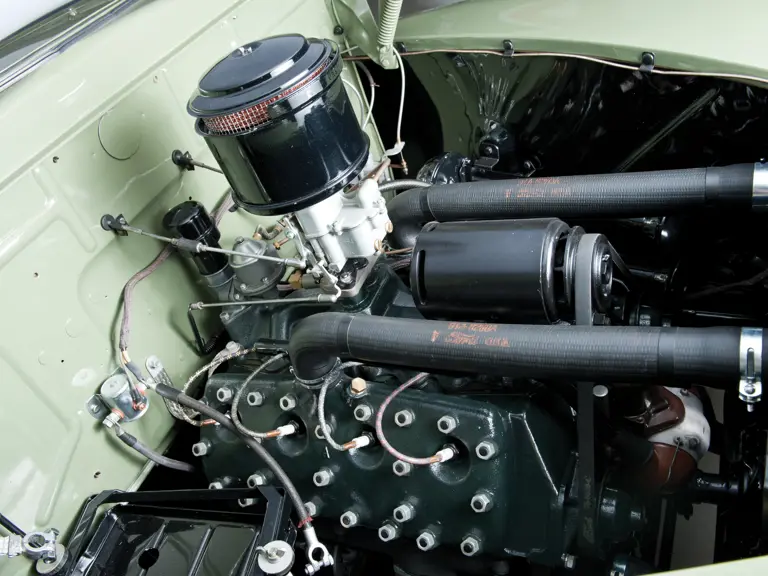
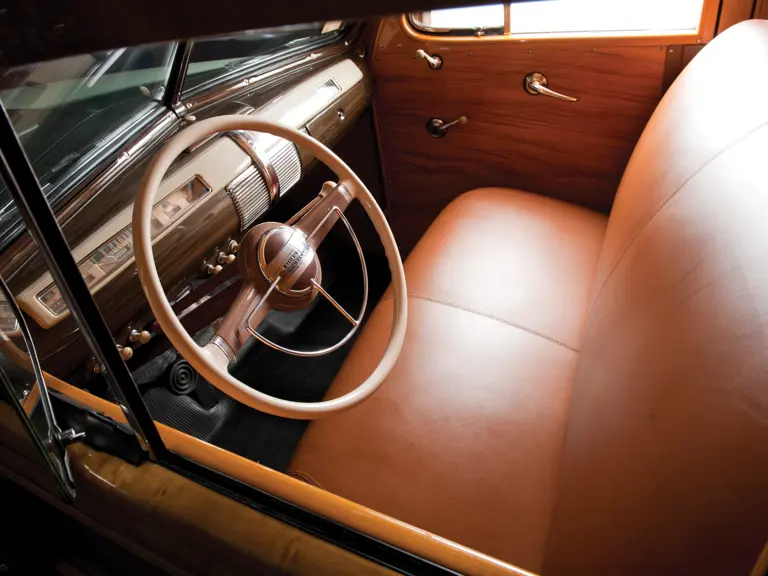

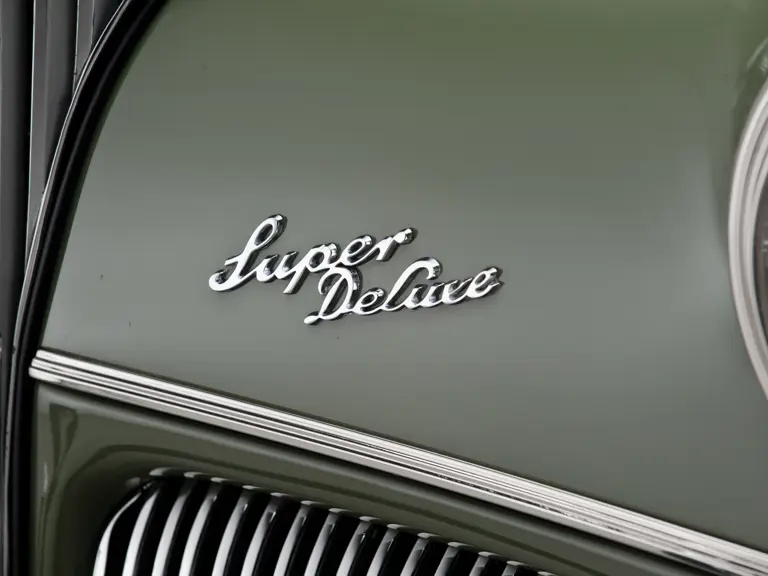
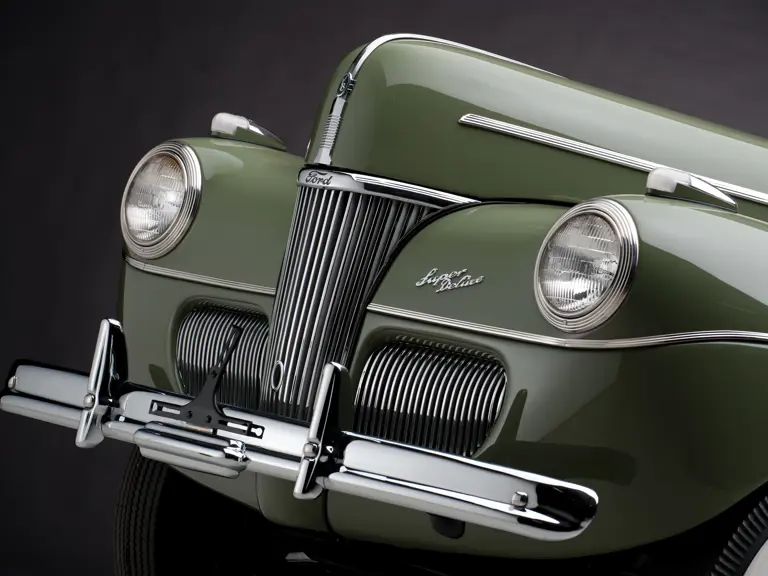

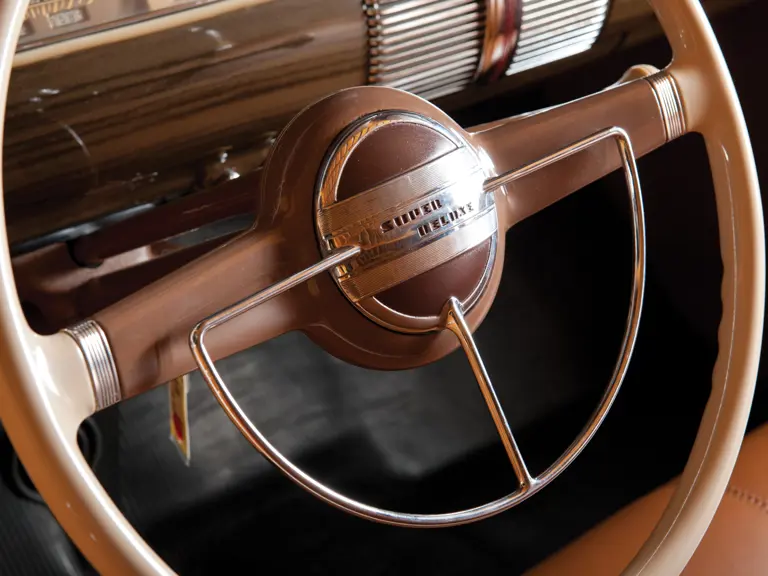

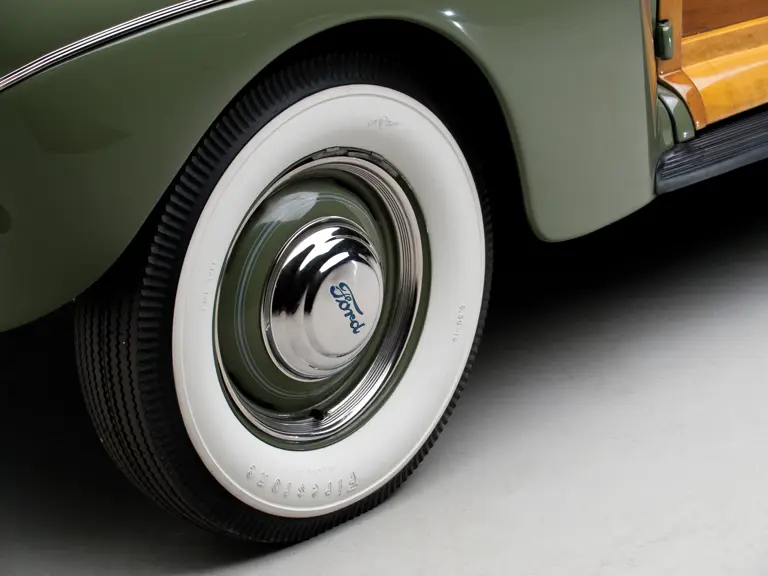
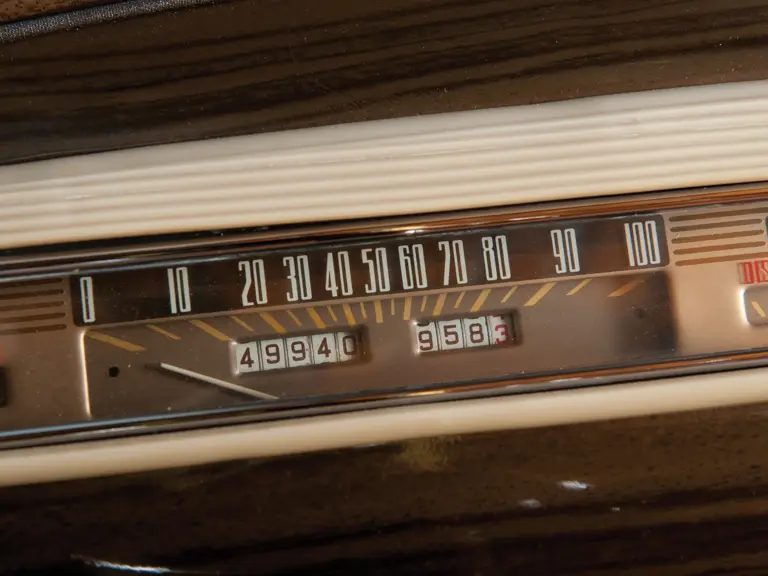
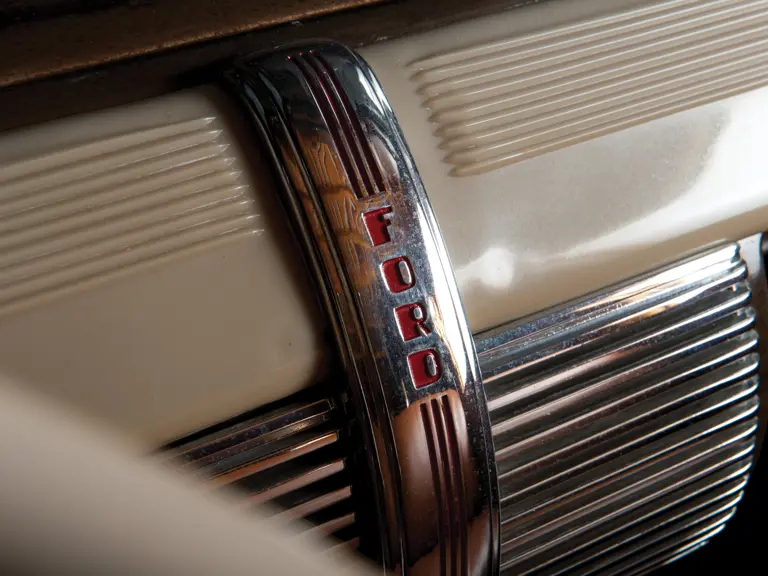
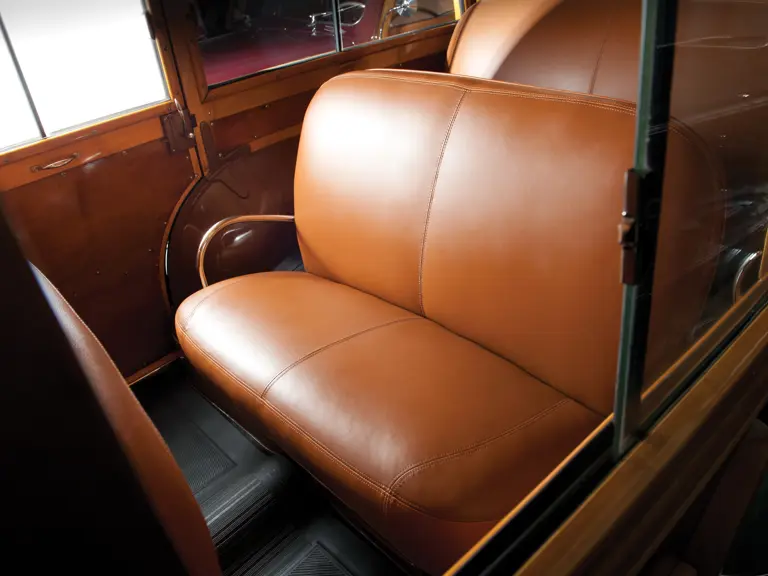
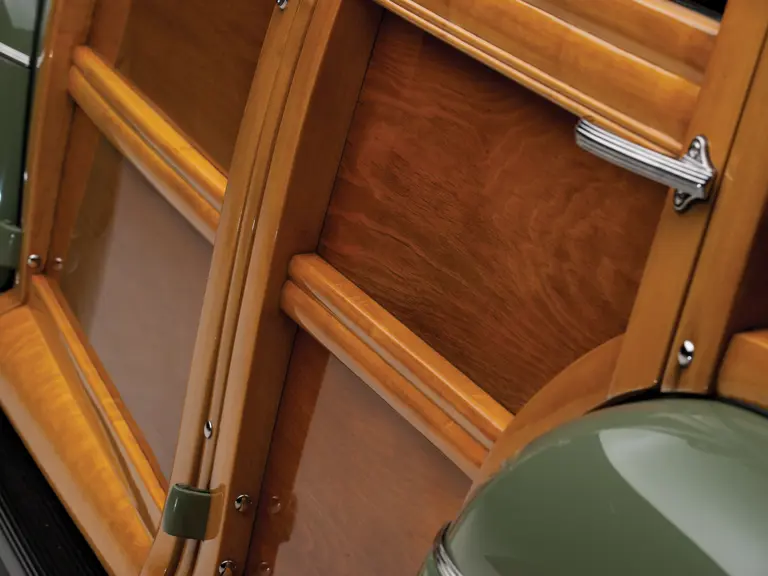
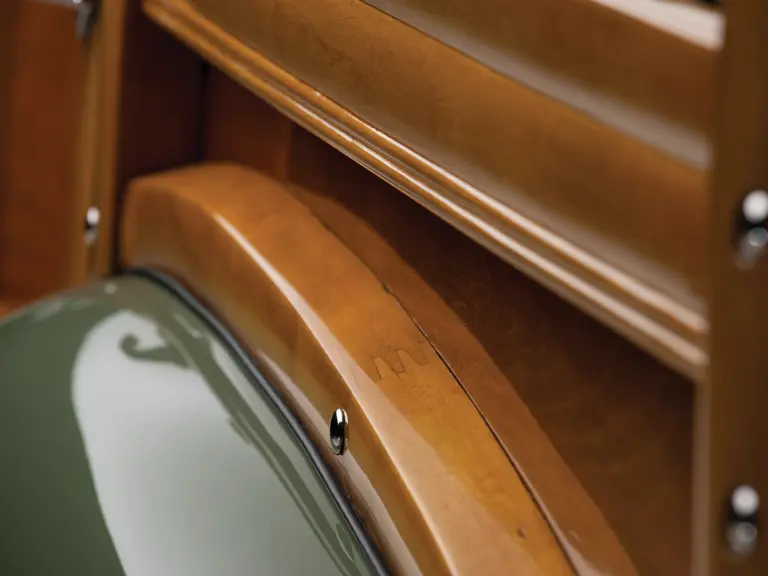
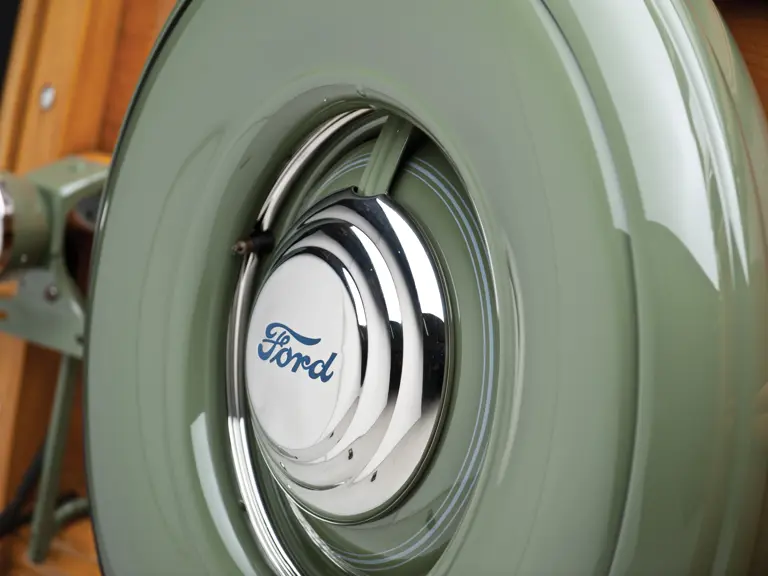
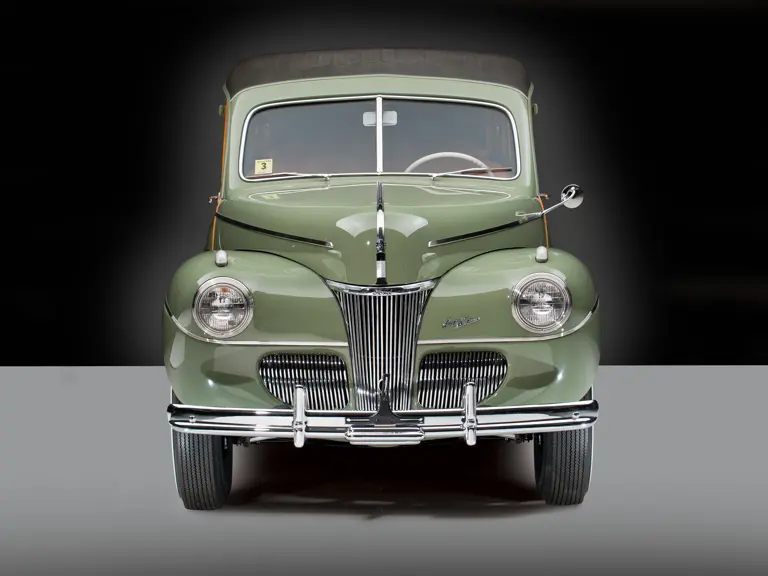

 | Hampton, New Hampshire
| Hampton, New Hampshire
